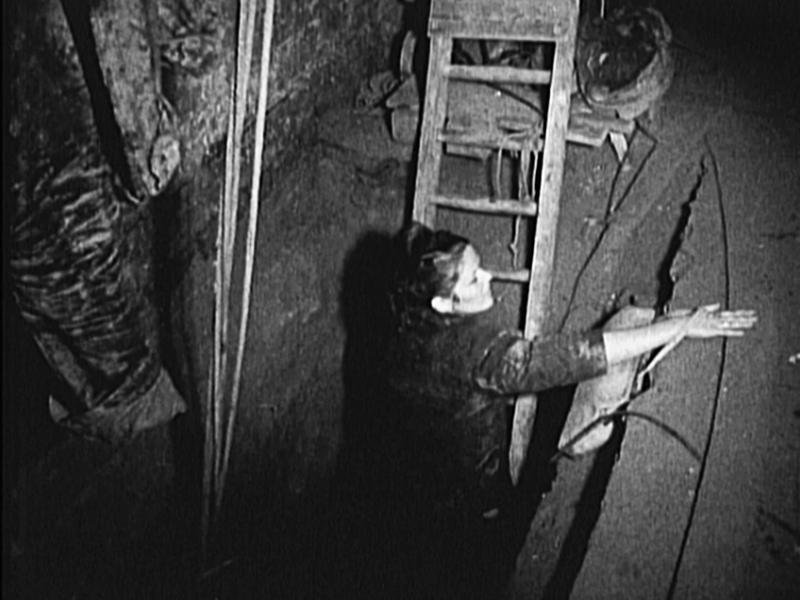
In 1961, when the Berlin Wall was first constructed, it divided the city into the Allied-controlled West and Soviet-controlled East. With each passing day, East Berliners sensed their dwindling prospects and access to the world beyond, and began to make desperate attempts to escape to West Berlin.
They tried everything, from jumping from windows of the buildings adjacent to the wall, to swimming across the River Spree, to crashing straight through in trucks. Then came new strategy -- West Berliners started to dig tunnels to the East in hopes of freeing their friends and loved ones.
As news broke of these tunnels, American news networks-- most notably, NBC and CBS -- were eager to film the digging in action. Bob talks to Greg Mitchell, journalist and author of the new book The Tunnels: Escapes Under the Berlin Wall and the Historic Films the JFK White House Tried to Kill, about the efforts of American journalists to report on the tunnels and the JFK administration's efforts to suppress their work.
The Tunnels will be released on Tuesday, October 18, 2016. Here's an excerpt from the book:
One day it would be considered a landmark in the history of television, but on the evening of September 14, 1962, its future seemed very much in doubt. At the NBC office in West Berlin, Reuven Frank was growing frantic. All day he had been watching the remarkable raw footage shot weeks earlier by his camera crew. He couldn’t have been more excited, or anxious. His Berlin correspondent, Piers Anderton, had told him the escape mission, set for late-afternoon on this day, would likely be over by 8 o’clock. Since then, not a word.
Frank, the producer on the top-secret project--which was funded by NBC despite strict warnings from the State Department--had just flown from New York City to Berlin when alerted to the impending tunnel escape. He had expected the brothers Peter and Klaus Dehmel to arrive at the office by nine with their footage but that had not happened. He ordered an expensive Chinese meal delivered, but was too jazzed to eat it. Had the escape under the heavily-patrolled Wall been compromised as it had been at Kiefholz Strasse a month earlier, which led to the arrest of dozens of would-be refugees and couriers, thwarting Daniel Schorr's scoop for CBS? Finally he decided to go out and take a look around.
Not wishing to draw attention, he requested a nondescript car and asked one of his bureau chief's assistants to drive him past the tunnel entrance in the West--a swizzle stick factory--without slowing down. He didn’t see any unusual police activity in the West nor, peering over the Wall, in the East, where the mass escape, via a basement in a tenement two blocks from the Wall and death strip, might have already happened, or been foiled. If there had been a major bust, there would have been some sort of feverish activity or flashing lights, he assured himself, as he returned to the office, to wait some more.
At two a.m. the Dehmels arrived. They had refused to leave the basement until the mission was over, which had meant waiting, like some of the diggers, for the final party of refugees to crawl on all fours through the muddy tunnel rapidly filling with water: three young women with four children in tow. That brought the total number of escapees that night to twenty-seven, despite the hazardous condition of the 400-foot cavern. Then the Dehmels had hauled their precious reels of film stock to a secure lab. Reuven Frank would have to wait until later that day to screen what they had captured, but the Dehmels’ account made it sound like a phenomenal, heroic success—and, incidentally, tremendous television.
Around noon at NBC’s Berlin bureau, the Dehmels’ stark, silent, black and white footage from the night before had come back from the lab and was about to be projected onto the only “screen” at hand: a large sheet of stained white cardboard. Frank wondered if it could live up to the Dehmels’ synopsis of ten hours earlier. He didn’t have to wait long to find out. Just a few minutes in, the screen showed Eveline Schmidt, whose plight had inspired the tunnel organizers to move ahead with their outrageously risky project back in March, climbing the ladder, with Klaus Dehmel, of all people, rushing forward to help her. Despite the weak lighting, the image quality was technically adequate, the tension palpable, the drama off the charts. Soon Eveline's baby, husband and mother-in-law followed her up the ladder to freedom.
On and on it went, displaying the stoic arrival of the more than a dozen escapees and their emotional reactions afterward. Then the camera returned to the ladder and hole in the floor for a few more arrivals, including the tall man in the leather jacket, suspected of being a Stasi agent, who was almost shot by tunneler Hasso Herschel earlier that night. Finally, the last woman and baby arrived, ending in a heart-rending close-up of one of the tunnelers on the ladder holding his son for the first time.
Reuven Frank was floored. He rang his boss, NBC's vice president for news, Bill McAndrew, back in New York to tell him to forget the plan for a sixty-minute special on a wide range of Berlin escape efforts—he would need ninety minutes just to tell the tale of this one tunnel.
He couldn’t imagine that, for NBC, the easy part was over. Soon the Kennedy White House and State Department would attempt to suppress what he felt certain would be a landmark documentary.
Adapted from THE TUNNELS: ESCAPES UNDER THE BERLIN WALL AND THE HISTORIC FILMS THE JFK WHITE HOUSE TRIED TO KILL Copyright © 2016 by Greg Mitchell. To be published by Crown, an imprint of Penguin Random House LLC, on October 18.
Song:
"Turnaround" by Ornette Coleman
